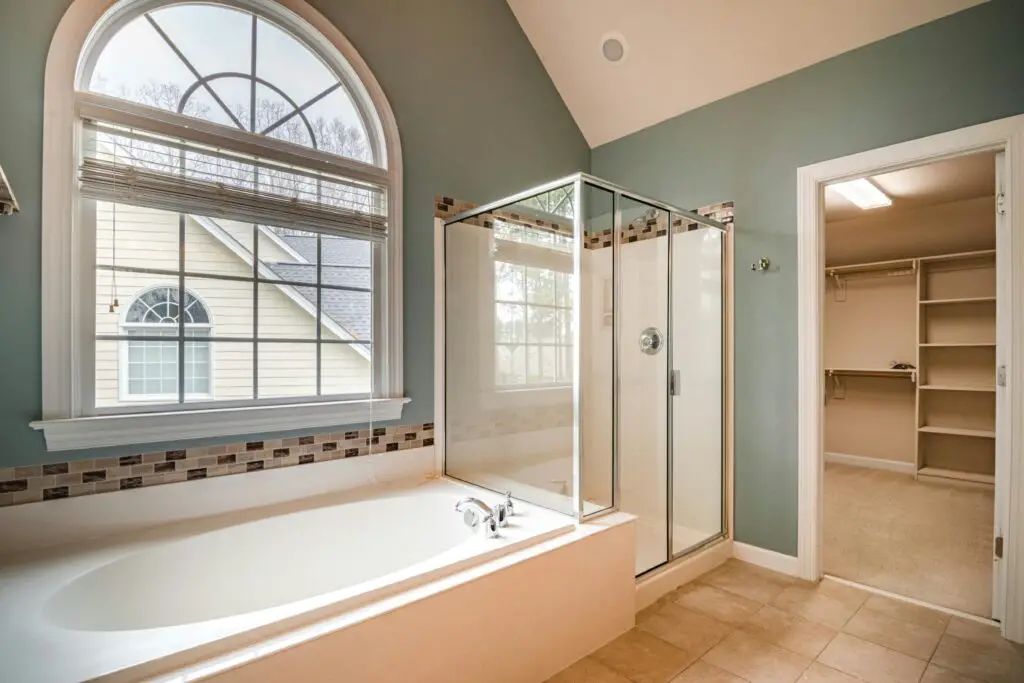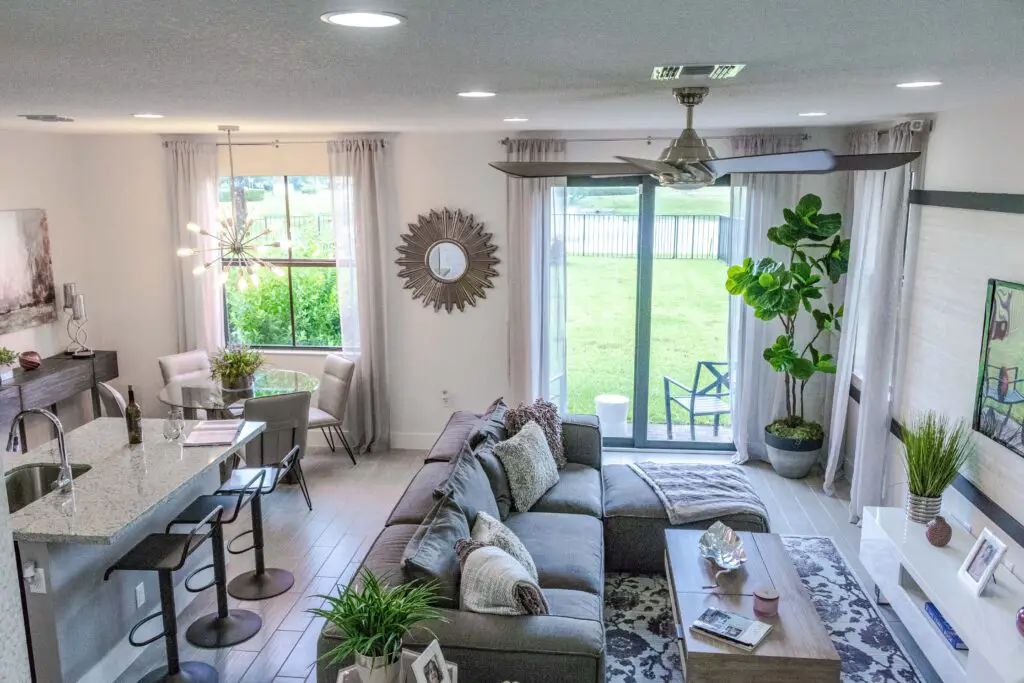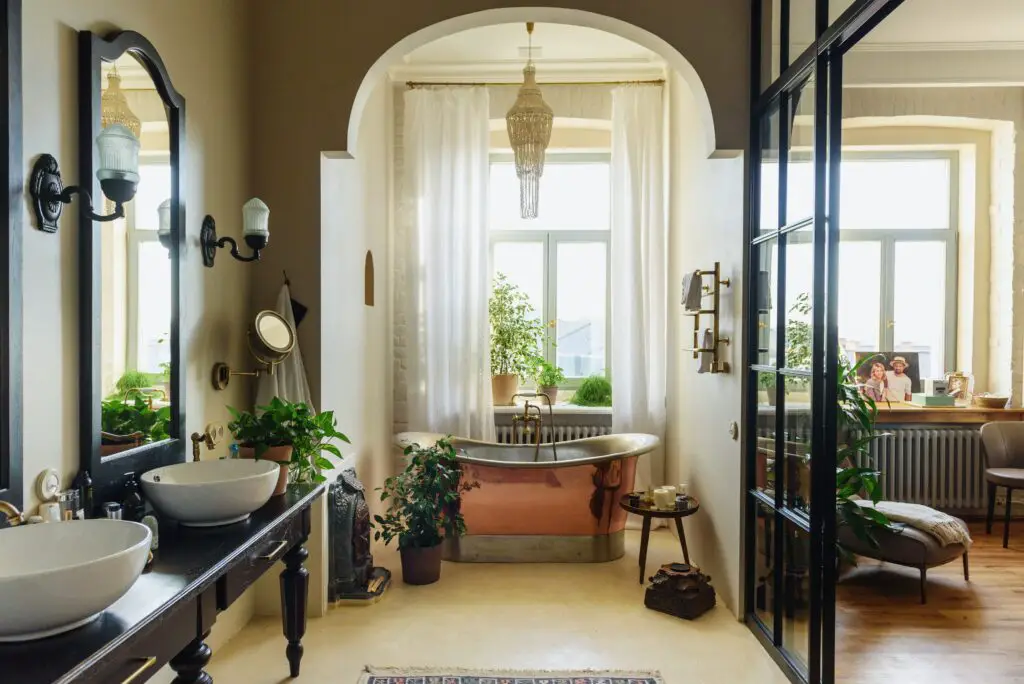The walk-in shower has evolved from a mere bathroom fixture into a luxurious and stylish centerpiece of modern bathrooms. Whether you’re building a new bathroom or renovating an existing one, designing a modern and sleek walk-in shower can elevate your home’s aesthetic and functionality.
This comprehensive guide is your roadmap to designing a modern and sleek walk-in shower that combines elegance, innovation, and practicality. We’ll cover everything from planning and materials to accessibility and maintenance, helping you transform your bathroom into a contemporary oasis.
Planning Your Modern Walk-In Shower
Before you embark on designing your dream walk-in shower, careful planning is essential. Start by assessing your available space and layout. Consider the location of existing plumbing, electrical connections, and structural limitations.
Setting a realistic budget and timeline is crucial to ensure your project stays on track. Identify your design preferences and goals, whether it’s a spa-like retreat, a space-saving solution, or a mix of both. Planning is the foundation of a successful modern walk-in shower project, so take your time to get it right.
Selecting Materials and Finishes
One of the key elements in creating a modern and sleek walk-in shower is selecting the right materials and finishes. Start with the choice of tiles and surfaces, as they set the tone for the entire design.
Large-format tiles in neutral colors can achieve a clean and contemporary look, while textured tiles can add depth and character. For fixtures and hardware, opt for sleek and minimalistic designs that complement your overall style.
Consider high-quality finishes like brushed nickel or matte black for a modern touch. Additionally, explore the option of glass enclosures and doors, which not only contribute to the sleek appearance but also enhance the sense of spaciousness in your walk-in shower.
Designing for Accessibility and Safety
A modern walk-in shower should not only be visually appealing but also accessible and safe for users of all ages. Incorporate barrier-free entry options, such as a gently sloping floor or a curbless shower, to ensure easy access without tripping hazards.
Install grab bars strategically to provide support, especially for seniors or individuals with mobility challenges. Choose slip-resistant flooring materials to prevent accidents. Adequate drainage and ventilation are also vital to maintain a dry and mold-free environment. By addressing accessibility and safety concerns, you’ll create a walk-in shower that’s both beautiful and functional.
Maximizing Storage and Functionality
While a sleek appearance is important, a modern walk-in shower should also offer practicality and convenience. Consider built-in niches and shelves for storing toiletries and bath essentials.
Select appropriate seating options, such as a built-in bench or fold-down seat, to enhance comfort and functionality. Ensure your walk-in shower is well-lit with adequate task lighting and proper ventilation to prevent moisture buildup. By maximizing storage and functionality, you’ll create a space that not only looks modern but also works efficiently in your daily routine.
Incorporating Modern Design Elements
To achieve a truly modern walk-in shower, embrace design elements that exude contemporary flair. Opt for minimalistic and clean lines in your choice of fixtures, such as sleek faucets and showerheads.
Explore contemporary color palettes, including neutral tones and monochromatic schemes, to create a cohesive and visually pleasing environment. Incorporate smart technology and fixtures, such as digital shower controls or rainfall showerheads with LED lighting. These modern design elements not only enhance the aesthetics but also elevate the functionality of your walk-in shower.
Waterproofing and Installation
Ensuring the longevity and durability of your modern walk-in shower starts with proper waterproofing and installation. Waterproofing measures are essential to prevent moisture from seeping into walls and floors, potentially causing structural damage and mold growth.
It’s highly recommended to hire a professional installer or contractor with experience in walk-in shower construction. They will ensure that the installation is precise, the plumbing is correctly connected, and the drainage system is efficient.
Throughout the installation process, perform quality control checks to catch any issues early and address them promptly. A well-executed installation is the key to a successful modern walk-in shower that stands the test of time.
Maintenance and Care
To preserve the beauty and functionality of your modern walk-in shower, establish a regular cleaning routine. Use appropriate cleaning products and techniques for your tiles, glass, and fixtures to prevent soap scum and mineral buildup.
Address any maintenance issues, such as leaky faucets or grout deterioration, promptly to avoid more significant problems. Regularly inspect and reseal grout lines and joints to maintain waterproofing. By investing time in maintenance and care, you’ll extend the life of your modern walk-in shower and continue to enjoy its sleek and contemporary appeal.
Conclusion
Designing a modern and sleek walk-in shower is a rewarding project that can enhance the overall look and functionality of your bathroom. By carefully planning, selecting the right materials, prioritizing accessibility and safety, maximizing storage and functionality, and incorporating modern design elements, you can create a bathroom oasis that meets your needs and reflects your style.
With proper waterproofing and installation and diligent maintenance, your modern walk-in shower will remain a stunning and functional centerpiece of your home for years to come.
Frequently Asked Questions
1. How can I make my walk-in shower look better?
To make your walk-in shower look better, consider the following:
- Choose stylish and modern tiles and finishes.
- Opt for sleek and minimalistic fixtures and hardware.
- Ensure proper lighting and ventilation.
- Incorporate contemporary design elements.
- Keep it clean and well-maintained.
2. How to design a modern shower?
Designing a modern shower involves selecting contemporary materials, finishes, and fixtures. Embrace clean lines, neutral color palettes, and minimalistic design elements. Prioritize functionality and accessibility, and ensure proper waterproofing and installation.
3. Are walk-in showers going to be the new trend?
Yes, walk-in showers are a growing trend in modern bathroom design. They offer a sleek and open appearance, making them a popular choice for homeowners looking to create a contemporary and accessible bathroom space.
4. What is best for walk-in shower walls?
The best materials for walk-in shower walls include porcelain or ceramic tiles, glass panels, and natural stone. These options offer durability, style, and water resistance, making them suitable for modern walk-in showers.
5. What is the best base for a walk-in shower?
The best base for a walk-in shower depends on your design preferences and accessibility needs. Options include a curbless shower pan, a sloping floor with a linear drain, or a prefabricated shower base. Choose the one that suits your project best.
6. What are the disadvantages of a walk-in shower?
While walk-in showers offer numerous benefits, they may have some disadvantages, including:
- Potential for water splashes outside the shower area.
- Limited privacy compared to enclosed showers.
- Higher installation costs for waterproofing and drainage.
7. What is the difference between a shower and a walk-in shower?
The main difference between a shower and a walk-in shower is the design. A traditional shower often has a bathtub or an enclosed space with a curb or step to access the shower area. A walk-in shower, on the other hand, typically has a barrier-free entry and a more open, modern design.
8. How do walk-in showers not get water everywhere?
To prevent water from splashing outside a walk-in shower, consider the following:
- Use a strategically positioned glass enclosure.
- Ensure proper drainage with a linear or center drain.
- Include a showerhead with adjustable settings.
- Place a bath mat or absorbent rug outside the shower area to catch any excess water.
9. Are walk-in showers suitable for small bathrooms?
Yes, walk-in showers can be suitable for small bathrooms. They can help maximize space by eliminating the need for a bathtub or bulky shower enclosure. However, careful planning and layout considerations are essential to make the most of the available space.



